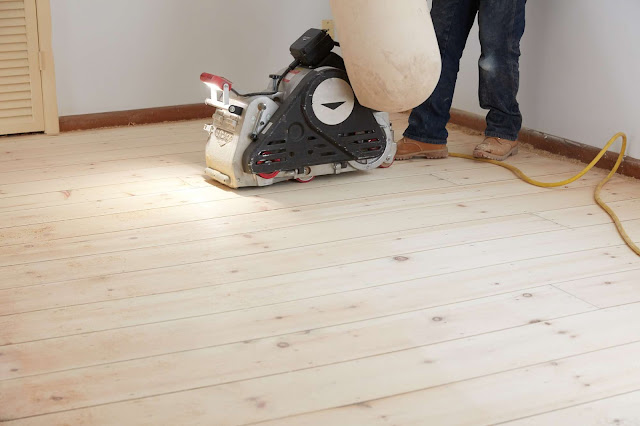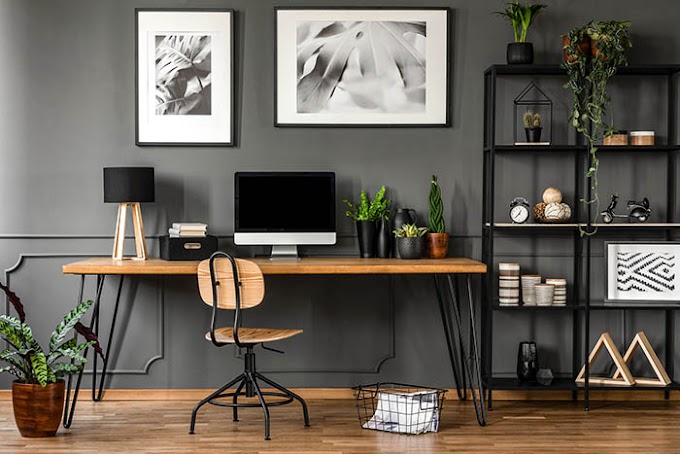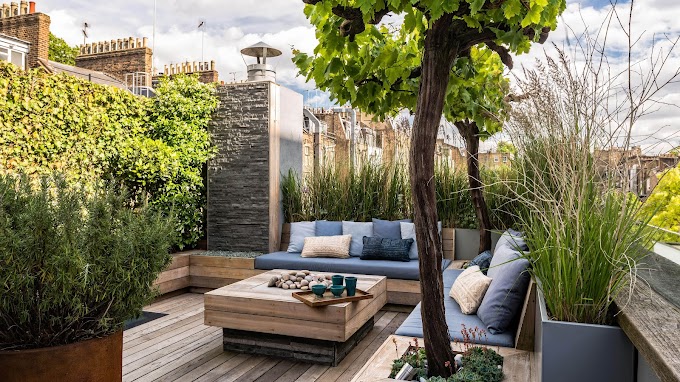6 Things to Know Before You Refinish Hardwood Floors
Prepare the Room
Remove all furniture, rugs and window decorations. Tape painter's tape over vents and electrical boxes to keep dust out of ducts and electrical work. Use plastic sheets to seal the doors if you're only doing one room. Base molding can be gently removed with a pry bar. The quarter-round section can be removed, but the remainder of the baseboard can remain in place.
To ensure proper replacement of molding parts, number each piece with a pencil as you remove it. To get rid of any nails or staples, use needle-nose pliers. Any loose boards should be sanded down.
Repair and Patch
Use wood filler and a spackle knife to repair any large cracks or holes in the floor. If your floor is severely damaged, use a trowel or thin wood filler that distributes and covers large areas. A large putty knife is needed to apply it.
However, if your floor has minor damage, you can use wood patch filler in isolated areas. Let the filler dry thoroughly. Wipe the floor with a damp cloth to remove all debris and dirt. Let it dry completely before sanding.
Sand the Floor
Renting a drum sander from a home improvement retailer will do you for this step. This can be difficult to control when using a drum sander, and if you do, your floors may be damaged. When renting equipment, request a brief introduction and some tips.
When you're confident, practice sanding on a larger sheet of plywood. With the motor running, start moving slowly. Before you stop, put away the sander while it's still running. Put on an eye and respiratory mask.
40-grit sandpaper should be used to start sanding. This very thick paper will remove heavy-duty damage like scratches, dings, and previous finishes but will leave behind a rough surface. Work in 3- to 4-foot pieces, keeping the grain of the wood. Stopping can result in a persistent stain on your floor, so go slowly and steadily across the floor.
A board should separate the rows. This will take about 20 square feet of sandpaper per item. After regular inspection, replace the sandpaper as soon as it becomes worn. Be sure to empty the sander's dust bag frequently. Keeping it at least half full will improve performance.
For the sides of the room, it would be best to use a second sander as a drum sander is large and heavy. Sand down to the wall using the same grit sandpaper and edge sander. Use 40-grit sandpaper to smooth the surface until the floor is even in color.
On both the edge sander and the drum sander, repeat the process using 60, 80, and then 120 grit paper. After each round of sanding all patched holes or cracks will be level with the surface of the floor, revealing a smooth surface. Between each step, hoover and dust off. The professional-quality finish you want can be achieved by using fine-grit paper.
Polish the Floor
After buffing the floor will be perfectly smooth, all traces of sanding will be gone. Some people rent an industrial floor buffer for this step, but the pole sander in the image is an excellent alternative. A pole sander requires a bit more time, but is also less expensive and easier to use than a buffer. Buff the floor along each board, going back and forth with the grain, using a 120-grit sanding screen.
Prepare for Sealer or Stain
Double-check that your room and floor plan are spotless. Any sand, hair, or small debris will affect your finish. While your finish is drying, wipe down the walls to prevent dust from falling onto the floor. Use a shop vacuum with a brush head to thoroughly clean the floor, and then use a tacky tack cloth to remove any remaining debris.
Use the "water popping" method to make sure the stain evenly penetrates the board. Use a solution of one-part denatured alcohol to two parts waters. Using a pump sprayer, evenly cover the floor with the answer. To spread the solution evenly, sweep the floor with a cloth or mop. As a result, the grain of the wood stands up and is better able to absorb the dye. The floor should be given at least 30 minutes to dry.
Seal the Floor
Sealing the floor adds shine and luster to bring out the beauty of the wood and protect it from water damage, dents and scratches.
The most widely used hardwood sealer is polyurethane, which is offered as a water-based or oil-based solution. It is available in glossy and matte. When working with oil-based polyurethane, Alya Koe from Muggyropes suggests making sure the area is well ventilated and wearing a respirator mask.
Please make sure the floor is free of dirt and hair and clean it with a tack cloth. Afterwards, roll on the polyurethane with a smooth sponge. Around the margin of the room, a paintbrush may be necessary. Work in small sections with the grain of the wood. Multiple coatings are necessary for polyurethane. Buff the floor between coats after allowing the product to dry completely (see manufacturer's recommendations for drying times). Typically, additional coats provide more protection.
Conclusion:
One great thing about solid wood flooring is that it can be refinished. Refinishing wood floors requires strength and time, but is manageable. Now that you have beautiful floors throughout your home, keep them looking brand new by sweeping and mopping frequently, using furniture pads, and being careful when wearing shoes with bumpy soles.
If you need any professionals to renovate your home, hire the best and low budget interior designers near me. They have years of experience with great designing skills. Click the link to visit the website.







0 Comments